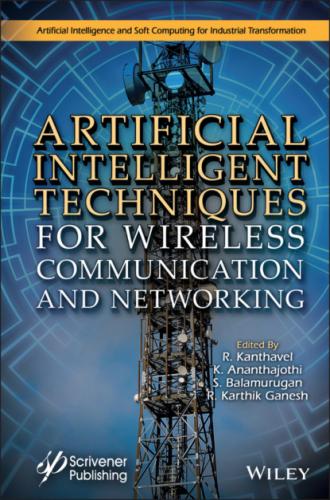The topic has several introductions. They all serve a different purpose and offer a different perspective on these rapidly changing 5G communications. The goal of this review is to provide the reader with 5G usable artificial intelligence and to assist mobile users. The main contributions of this work are
1 Provided a complete groundwork of integrated services of 5G in AI and AI in 5G;
2 Provided a clear road map of artificial intelligence and 5G in the industrial space;
3 Described the role of artificial intelligence in the mobile networks along with research challenges.
This survey is clearly differentiated from other recent surveys by the above listed points. The paper is structured as follows: Along with this detailed introduction, the complete study of AI in 5G and 5G in AI are reviewed in Section 2.2. Section 2.3 discusses artificial intelligence and 5G in the industrial space. Section 2.4 briefly describes the roles of AI in mobile networks followed by a conclusion in Section 2.5.
2.2 Integrated Services of AI in 5G and 5G in AI
5G would be able and stronger than the conditions characteristic to host many more smart devices, particularly when about 41.6 billion Internets of Things smart devices are to be used by 2025. This is especially critical and many want a secure cloud access for efficient movement, such as driverless car systems and industrial sensors [12].
GSMA, the mobile network trading body, has identified wireless technology as providing three pillars of next-generation connectivity:
enhanced mobile broadband (eMBB),
ultra-reliable,
low-latency communications (URLLC) and massive machine-type communications (mMTC).
Figure 2.3 AI in next generation networks.
Multiple devices based on high-speed and low-speed bandwide will be needed for the supporting equipment, both require online analytics in real-time. The large number of information generated requires the combination of 5G and Artificial Intelligence (AI) (Figure 2.3) [6].
2.2.1 5G Services in AI
AI can exist at every angle in the cloud environments, multi clouds, and mobile network of the potential. We also see significant suppliers of Technological innovations, such as NVIDIA, making significant contributions in 5G-based networks in connectivity, the Internet of Things (IoT) and other edge environments [14, 20].
2.2.1.1 Next-Generation Edge Convergence With AI Systems on Chip
5G is compatible with the wireless Long-Term Growth and Wi-Fi interfaces cellular networks. 5G can quickly extend through indoor and large areas when introduced in cross-technology access points. Ultimately, the implementation of technology will lead to radio spectrum convergence for these various radio channels and the development of single chip access points, which are easily accessible to seamless connectivity through various radio access technologies. For many mass device realms with neural network processing cycle, all this 5G interfaces will eventually turn into low-power low-cost chip systems (Figure 2.4).
2.2.1.2 Massive Device Concurrency Replenishing AI Data Lakes in Real Time
5G can handle up to one million competing boundary devices per square kilometer, which is larger than 4G networks in a magnitude order. The last scale would enable companies, in a shifting paradigm known as multiaccess leading computing, to regularly obtain large amounts of data from cellphones, sensors, heating systems and other mobile devices. As 5G networks start to overwhelm water data structures with new telephone data globally, AI application analysts and data scientists can create more advanced analytical data.
2.2.1.3 Ultra-Fast, High-Volume Streaming for Low-Latency AI
5G connection times are substantially less as 4G, as small as 1 ms vs. the 50 ms 4G feature. As a result, 5G has far higher transmissions and processing rates than 4G, which is 20 Gb/s or 5–12 Mb/s for 4G. The stronger relation between the bandwidth of the system and the 5G power amplifier comes from the capacity to simultaneously transmit several data streams between the ground station and the borders. These fun working methods allow 5G to serve AI DevOps pipelines staff in low latency, from data intake, planning, modeling, training in real-time streaming scenarios. In addition, when coupled with its much lower latency, the faster download speeds of 5G will allow analysts to obtain, clean and evaluate much more information in a much shorter period of time.
2.2.2 AI Services in 5G
2.2.2.1 Distributed AI
AI is also a major aspect of the network that guarantees that AI and other software staffing levels can be accommodated with all their difficulty by 5G networks. New research shows that many providers of telecommunications are well on track to launch AI in order to operate 5G networks worldwide. 5G network will have to be self-regulating, self-sustaining, self-repairing and continuing self-optimizing in order to best support the next wave of decentralized AI applications. The key goal is to automate application-level net traffic, quality-of-service management, process development, analysis, and other associated processes more flexible, reliable, easily, and efficiently than conventional procedures. In addition, computer training and other AI frameworks may be implemented.
Figure 2.4 Service providers achieving benefits through AI.
2.2.2.2 AI for IT Operations (AIOps)
To ensure that 5G provides much faster, safer and more RF-efficient connectivity than before, AIOps will be necessary. For the virtual machines in the network and multi-cloud management suites which tackle 5G networks and applications from one end to the next, AIOps technologies will have to be central. At least from the end-to-end through 5G ecosystems, AIOps drives consistent quality of service. AI-based controls can ensure continuous and accurate configuration of RF channels and other network infrastructures to support improvements in service quality, traffic patterns, and application tasks. They also encourage reliable alarm control, installation and healing and the optimization of the subscriber’s interface.
2.2.2.3 Network Slicing
A 5G networking feature known as network slicing will be augmented by AIOps tooling. This allows many virtual networks to be run over one physical connection by 5G networks. AIOps tooling will allow proactive and dynamic supply of individual wireless service quality levels for many customer categories and edge device groups by using this virtualized resource allocation capacity. AIOps will also be required to increase dynamic 5G
